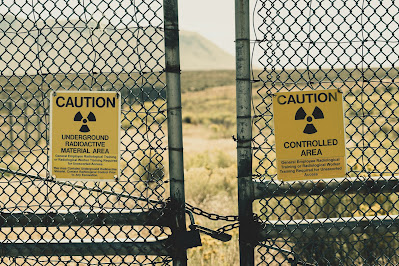Featured
- Get link
- X
- Other Apps
What is the Milky Way?
What is the Milky Way?
The Milky Way is the galaxy that we call home. It is a vast and complex structure that has fascinated astronomers and scientists for centuries. In this article, we will explore the key features of the Milky Way, its history, and what we can learn from studying it.
What is the Milky Way?
The Milky Way is a barred spiral galaxy that contains several hundred billion stars, including our Sun. It is characterized by its appearance from Earth as a hazy band of light seen in the night sky, formed from stars that cannot be individually distinguished by the naked eye. The name "Milky Way" is a translation of the Latin "via lactea," which comes from the Greek "γαλακτικὸς κύκλος" (galaktikòs kýklos), meaning "milky circle".
Size and Structure
The Milky Way has a diameter of about 100,000 light-years and is composed of stars, dust, and gas. It has a disk-shaped structure that appears as a band when viewed from within. Our Sun is located on one of the spiral arms, about 25,000 light-years away from the center of the galaxy. The galaxy is also home to a supermassive black hole called Sagittarius A*, which is about 4 million times the mass of the Sun.
History
The Milky Way is estimated to be about 13.6 billion years old, which is close to the age of the universe itself. It is believed to have formed from the collapse of a giant cloud of gas and dust, which eventually led to the formation of stars and planets. Over time, the Milky Way has undergone many changes, including the formation of its spiral arms and the merging of smaller galaxies.
Studying the Milky Way
The study of the Milky Way is important for several reasons. First, it helps us understand the nature and evolution of galaxies in general. By studying the Milky Way, we can learn about the processes that shape galaxies, such as the formation of stars and the role of dark matter. Second, it allows us to better understand our own place in the universe. By studying the Milky Way, we can learn about the conditions that led to the formation of our solar system and the evolution of life on Earth.
One way that astronomers study the Milky Way is through the use of telescopes. Telescopes allow us to observe the galaxy in different wavelengths of light, such as radio waves and X-rays, which can reveal different aspects of the galaxy's structure and composition. Another way that astronomers study the Milky Way is through computer simulations. These simulations allow scientists to model the formation and evolution of the galaxy and test different theories about its history.
Conclusion
The Milky Way is a fascinating and complex structure that has captivated scientists and astronomers for centuries. Its study has helped us better understand the nature and evolution of galaxies in general, as well as our own place in the universe. By continuing to study the Milky Way, we can learn even more about the processes that shape our universe and the conditions that led to the formation of our own solar system.
References:
1. NASA. (2021). What is the Milky Way? Retrieved from https://www.nasa.gov/audience/forstudents/5-8/features/nasa-knows/what-is-the-milky-way-58.html
2. National Geographic. (2021). Milky Way. Retrieved from https://www.nationalgeographic.com/science/space/milky-way/
3. European Southern Observatory. (2021). The Milky Way. Retrieved from https://www.eso.org/public/usa/images/eso0932a/
4. Universe Today. (2021). How Old is the Milky Way? Retrieved from https://www.universetoday.com/75805/how-old-is-the-milky-way/
5. Space.com. (2021). Milky Way Galaxy: Facts, Information & Pictures. Retrieved from https://www.space.com/19915-milky-way-galaxy.html
6. NASA. (2021). How Do We Study the Milky Way? Retrieved from https://www.nasa.gov/audience/forstudents/5-8/features/nasa-knows/how-do-we-study-the-milky-way-58.html
7. Forbes. (2021). How Astronomers Simulate The Formation Of Our Milky Way Galaxy. Retrieved from https://www.forbes.com/sites/startswithabang/2021/06/23/how-astronomers-simulate-the-formation-of-our-milky-way-galaxy/?sh=1d3e7c0f3d3a
Popular Posts

Why are Memories Forgotten?
- Get link
- X
- Other Apps

How is the Colour of a Lobster Determined?
- Get link
- X
- Other Apps

Can Sound Waves Solve Plastic Pollution?
- Get link
- X
- Other Apps

Can Animals Recognise Human Faces?
- Get link
- X
- Other Apps

Do plants sleep? The surprising science of sleep in the plant kingdom
- Get link
- X
- Other Apps

Is the Earth Spinning Faster?
- Get link
- X
- Other Apps

Can Bad Times Actually Improve Your Life? Surprising Benefits of Adversity
- Get link
- X
- Other Apps

Can Brain Implants Make You More Powerful?
- Get link
- X
- Other Apps

The Future and Potential of Nuclear Batteries
- Get link
- X
- Other Apps

Music and its impact on Studying
- Get link
- X
- Other Apps
Popular Posts

Why are Memories Forgotten?
- Get link
- X
- Other Apps

How is the Colour of a Lobster Determined?
- Get link
- X
- Other Apps

Can Sound Waves Solve Plastic Pollution?
- Get link
- X
- Other Apps

Can Animals Recognise Human Faces?
- Get link
- X
- Other Apps

Comments
Post a Comment